#meadow froghopper
Text
Summer Spittlebugs
This time of year it’s not unusual to be walking through a garden or meadow and suddenly come across what looks like a wad of spit or foam stuck to the stem of a plant. This wasn’t left by some uncouth person, nor is it the remnants of some pesticide or other chemical. Instead, it’s the active shelter of a spittlebug!

As the name suggests, these insects create these foamy conglomerations. They then use them as shelter while they feed on the sap of the host plant. There are literally thousands of species within the superfamily Cercopoidea, consisting of the three families Aphrophoridae, Cercopidae, and Clastopteridae. They’re also colloquially known as froghoppers, though the nymph stage that is found within the spit doesn’t yet hop.
The spit protects the nymphs in a few ways. It’s a visual cover to keep predators from seeing them. If a predator should try to eat the spit, nymph and all, it will find that the foam has a rather awful taste. And it can offer some protection from heat and sunlight on hot summer days. It’s made of waste material from digested sap; one nymph can cycle three hundred times its body weight in sap through its system in one hour.
While sap isn’t exactly a calorie-dense food, spittlebug nymphs have secret allies that were only recently discovered. It turns out that they have not one but two species of bacteria living in their digestive systems. In a symbiotic relationship, the bacteria take shelter there while helping the spittlebug acquire extra nutrition. How? By turning glucose from the sap into crucial amino acids that the nymph needs. Other insects that survive on sap also have these sorts of bacteria, but only one species each rather than two.
Adult spittlebugs are also pretty remarkable. They’re even better jumpers than fleas considering their larger size. Some still retain aposematic coloration that warns away predators. And while they may only live a few weeks after molting into their adult form, the females of some species can lay several dozen eggs before she dies.

Here’s the thing: the vast majority of spittlebugs aren’t going to seriously harm your plants. They don’t take enough sap, and aren’t going to hide in their foamy homes long enough to be a concern. If you have a LOT of them on one plant, they may cause a bit of distortion of the plant’s tissues, temporarily weaken its immune system or open it to diseases through the wounds, but this is a rare situation. And the spittlebug species that don’t produce bad-tasting secretions are potential food for other animals, so they do have an ecological role to play.
Occasionally species like the meadow spittlebug (Philaenus spumarius) may carry the bacteria Xylella fastidiosa which can cause widespread diseases in agricultural crops like Pierce’s disease or olive quick decline syndrome. But the plants in your garden are not likely to suffer the same fate, especially if you’re growing a nice variety of species rather than an entire plantation of one thing.
Finally, I want to advocate for biodiversity rather than the kneejerk reaction “It’s a bug on my plant–kill it!”. You want bugs in your garden (especially native species), because that means it’s an active ecosystem that supports local life. If you determine that you have a non-native species like the aforementioned meadow spittlebug, then all you need to do to get rid of it is hose down the affected plants as needed; pesticides won’t penetrate through the spit anyway, and a hose is faster, cheaper, and safer. Otherwise, native species of spittlebug are not going to cause you any issues, will be gone in a few weeks, and have a place in their ecosystem, too. So enjoy the fact that you’ve created a good home for wildlife, and marvel at these insects with a rather unique strategy for survival!
Did you enjoy this post? Consider taking one of my online foraging and natural history classes, checking out my other articles, or picking up a paperback or ebook I’ve written! You can even buy me a coffee here!
#spittlebugs#froghoppers#spit bugs#insects#bugs#invertebrates#wildlife#animals#nature#gardening#food web#ecology#ecosystem#scicomm#science communication#biology#science
93 notes
·
View notes
Text
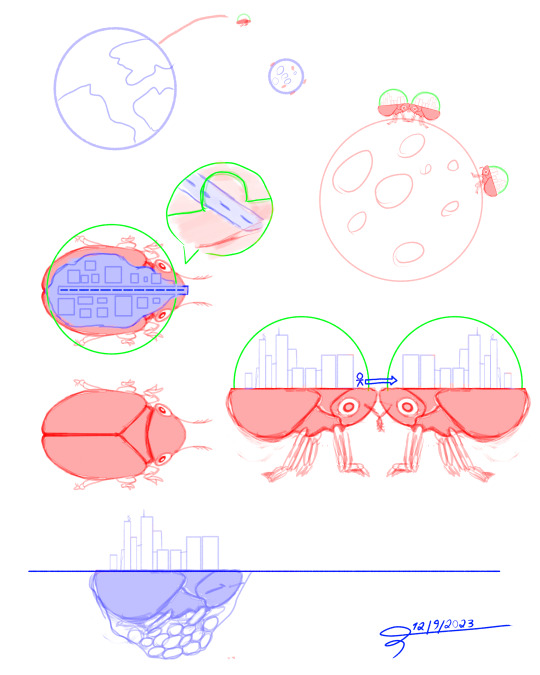
concept art for the Leaping Villages from my dnd campaign, i wanted the characters to go to the moon but not with a rocketship
so there are villages that are biult on top of giant Meadow Froghoppers and every year on their mating season, they jump to the moon to lay eggs and then come back
5 notes
·
View notes
Text
Anthro Allies Remastered (Part 9)








Now for Part 2 Of the Arthropods
Entognatha
Srebro (Silverfish)
Sprung (Springtails)
Coney (Coneheads)
Bisk (Bristletails)
Palaeoptera
Wyvern (Dragonfly)
Madi (Damselfly)
Mia (Mayfly)
Darter (Giant darner)
Exopterygota
Dan drift (Lice)
Bark (Barklice)
Book (Booklice)
Brash (Thrips)
DJ (Cicada)
Country (Treehopper)
Metal (Leaf hopper)
Opera (Froghopper)
Punk (Giant water bug)
Blues (Water Boatman)
Funk (Moss bug)
Jazz .(Bedbugs)
EDM (Assassin Bugs)
Latin (kissing bug)
Vocal (Water Measurer)
Pop (Water Strider)
Reggae (Backswimmer)
Polka(Stink Bug)
Folk (Seed bugs)
Gospel (Cotton stainers)
Rock (Cinnamon bugs)
Soul music and R&B(Squash bugs)
Holiday (White Fly)
Hip hop (Aphids)
Vertigo (Earwigs)
Obelisk (Stonefly)
Weve (Webspinner)
Holy (Angel insect)
Rownan (Grasshopper)
Meadow (Groundhopper)
Cedar (Cricket)
Maori (Weta)
Bullhorn (Mole Cricket)
Kate (Katydid)
Coolmong (Colocolo Monster)
Juanita (Jerusalem Cricket)
Spectra (Stick insect)
Foliage (Leaf insect)
Zoey (Tree lobster)
Sottile Insetto (Giant stick insect)
Narrow (Gladiator Bug)
Igloo (Ice crawler)
Artemis (Mantids)
Orion (Flower mantis)
Bhang (Cockroach)
Hiss (Hissing cockroach)
Termite Empire
Queen Gnaw
King Straw
Prince Maw
Princess jaw
Termite Guard
Termite Soldier
Termite Handmaidens
Termite Workers
Previous/Next
(For More Information About The Earthdemons, Neo demons, The Anthro allies , the O'Kong family and more of theses characters as well as updates please visit the @the-earthdemon-hub for more)
#my ocs#my art#elementalgod aj#aj the elementalgod#isle 0#Toonverse ocs#The Watchful Eye#Watchful Eye#O'Kong Family#Earthdemon#Neo Demons#Anthro Allies#Hexapoda#insects
3 notes
·
View notes
Text
The "smiley".
It is a difficult thing to capture the face of this insect. It watches you and constantly turns its butt towards the camera.

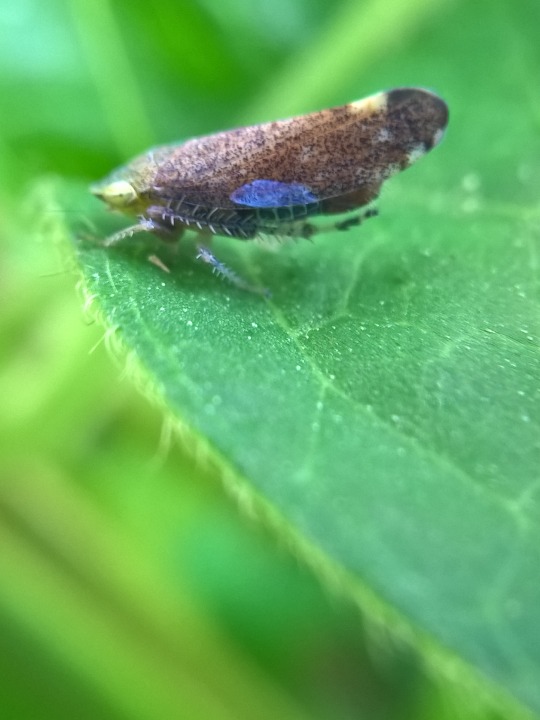

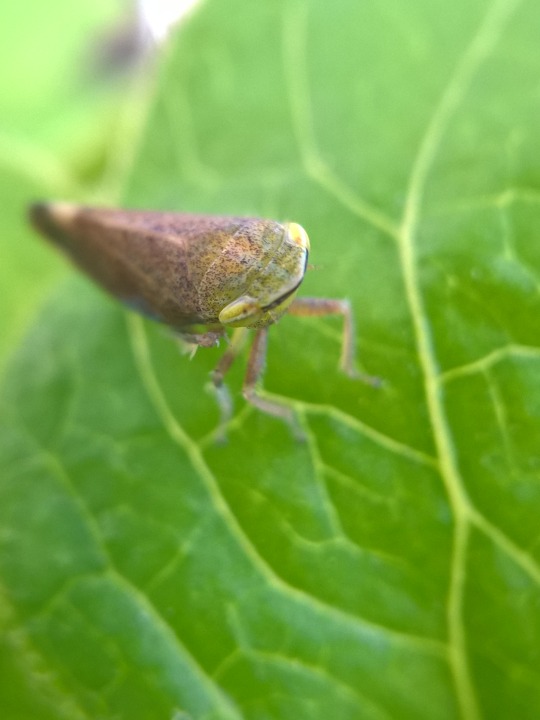
This is the Fieberiella florii, known as privet leafhopper. Thanks to @sweetly-obsessing for providing of this ID.
Or may be this is Philaenus spumarius, known as meadow froghopper. Thanks to @handwerkstatt for providing of this ID.
I'm still not sure of the exact ID. In any case, it's from the Cicadellidae family. I didn't find the same smiley face and the same colors yet.
14 notes
·
View notes
Photo

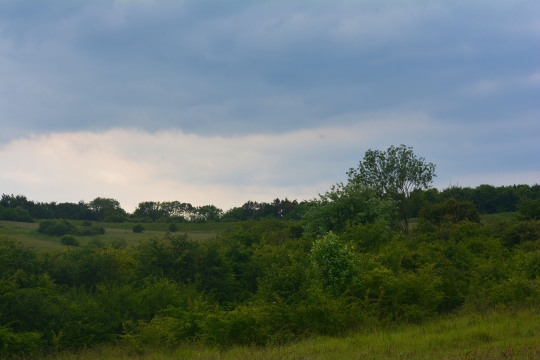

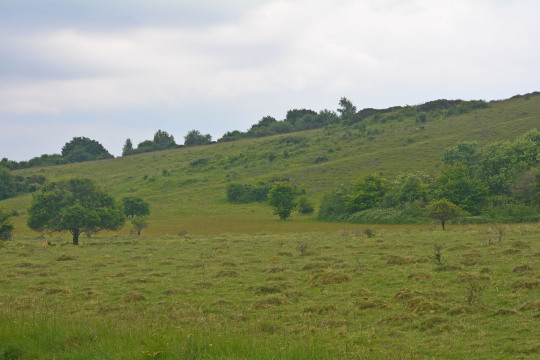
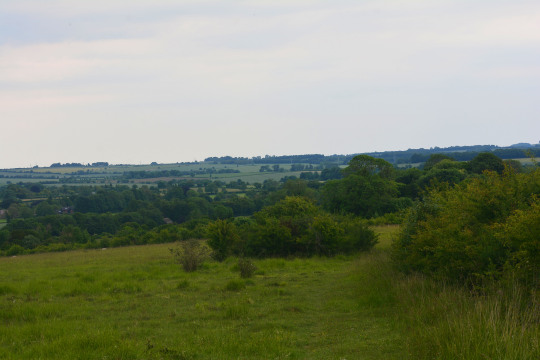
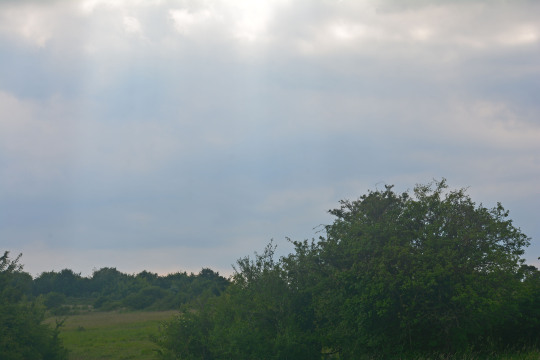

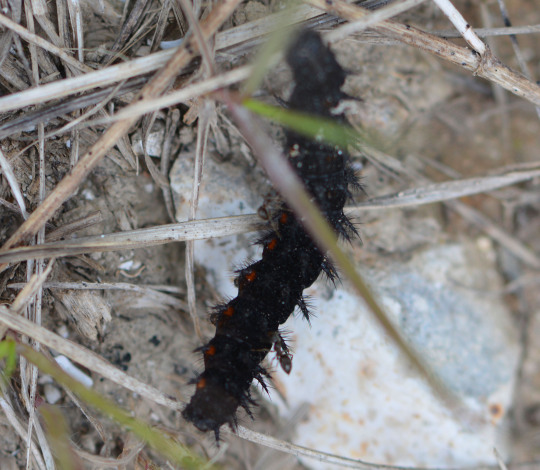

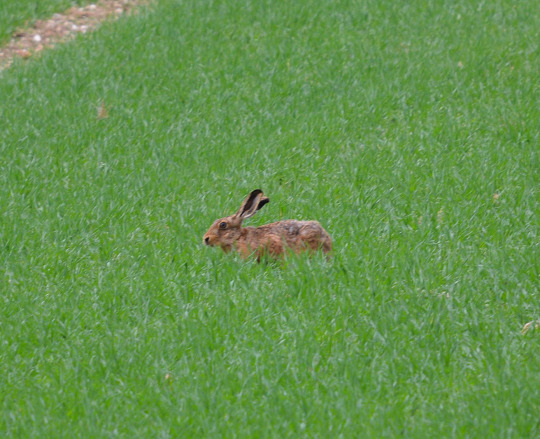
03/06/2022-Blog 2 of 2: Martin Down
We came here for the second bank holiday Friday running and it was nice to see the landscape looking so green with the grass so high and some interesting cloud formations on the walk. I took the second, fourth, fifth and sixth pictures in this photoset of views here today. It was a top walk of birds especially for warblers and especially along the hedgerow near the lower car park with great views of Whitethroat and Chiffchaff hearing the latter there well too, the species these bushes pleasingly teemed with included Chaffinch, Corn Bunting, Yellowhammer, Wren and many Woodpigeons too with Yellowhammer seen elsewhere on the walk too. I saw a very pretty female Blackcap with its nice nice brown head really well later in the walk. It was also great to see scores of Rooks all in and around one tree a key bird here which the seventh picture I took today in this photoset shows and a Red Kite flying over. There was a marvelous moment late on when walking the other way along the path a little way from the lower car park after a great walk round the reserve, when I heard and briefly saw an exotic Mediterranean Gull or two. A special inland sighting of this bird, not one I’ve seen at Martin Down before. I saw a Lesser Black-backed Gull just before not one I’ve seen here before either I don’t believe, you do find gulls in this sort of rural inland habitat especially near to landfill sites, it was just nice to see a variety of them today.
Small Blue butterflies made a nice sight in the world of insects, as did Five-spot Burnet moths, a nice black caterpillar which I took the eighth picture in this photose of and a couple of different types of beetle. I also very much enjoyed seeing a red-and-black froghopper. A type of insect I’ve heard of before as their larvae form cuckoo spit when sucking sap which I saw again today and have had my best year ever for noticing, so I really liked seeing an adult and I was so pleased to see such an attractive and colourful insect on a blade of grass a real highlight today.
It was brilliant to see loads of Hares at least eight looking over the neighbouring field after seeing the Mediterranean Gulls a place we often see Hares and we got a nice intimate view of one which I took the tenth picture in this photoset of. Special views of a mammal I am really excited by and admire and have had a good year for so far.
Pretty honeysuckle which I loved seeing today and took the ninth picture in this photoset of a lot it together at the top of a tree I did a macro closeup photo too, possible honesty and scabrous were floral highlights of the walk. I also enjoyed seeing kidney vetch, bird’s-foot trefoil, buttercup, possible common rock-rose, speedwell, dog rose, sorrel as shown in the third picture in this photoset, herb-Robert, nightshade, violet, plantain, nice lacey flowers I believe carrot, I believe elder, mignonette again here and dropwort in a great show of flowers today. A very fun packed day again today that it was so great to be out in.
Wildlife Sightings Summary: One of my favourite birds the Red Kite, one of my favourite moths the Five-spot Burnet, my first ever Red-and-Black Froghopper, Rook, Jackdaw, Magpie, Woodpigeon, I believe Grey Partridges quickly, Blue Tit, Corn Bunting, Yellowhammer, Whitethroat, Blackcap, Chiffchaff, Chaffinch, Wren, Mediterranean Gull, Black-headed Gull I believe too, Lesser Black-backed Gull, Speckled Wood, Small Blue, possible Meadow Brown, moths, caterpillar and the beetles.
#beetle#moth#caterpillar#butterfly#birds#small blue#speckled wood#red kite#five-spot burnet#red-and-black froghopper#rook#jackdaw#magpie#woodpigeon#blue tit#wren#mediterranean gull#black-headed gull#lesser black-backed gull#birdwatching#uk#photography#england#world#earth#nature#happy#martin down#dorset#hampshire
2 notes
·
View notes
Photo
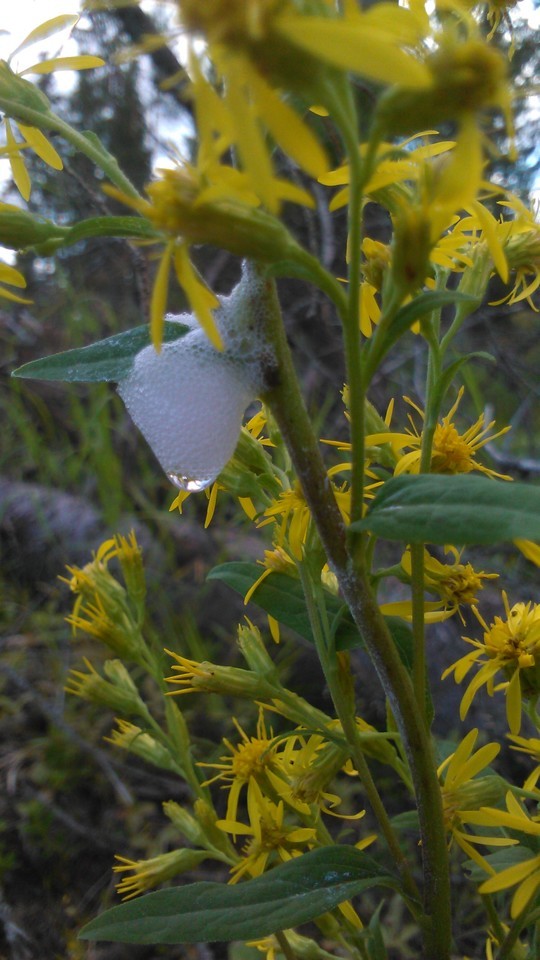

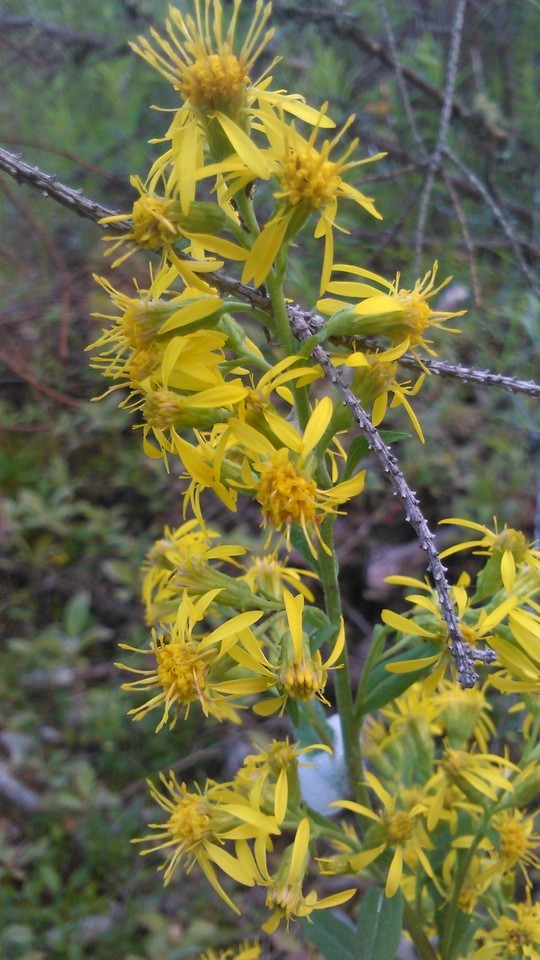
03.07-19
A ‘spit cocoon’ of a philaenus spumarius, meadow froghopper. On Solidago virgaurea, woundwort.
After the larva has hatched, it begins to consume the plant and blows air around it ---> air mixes with moisture and the protective foam is created.
- Vivera Rossi
12 notes
·
View notes
Photo
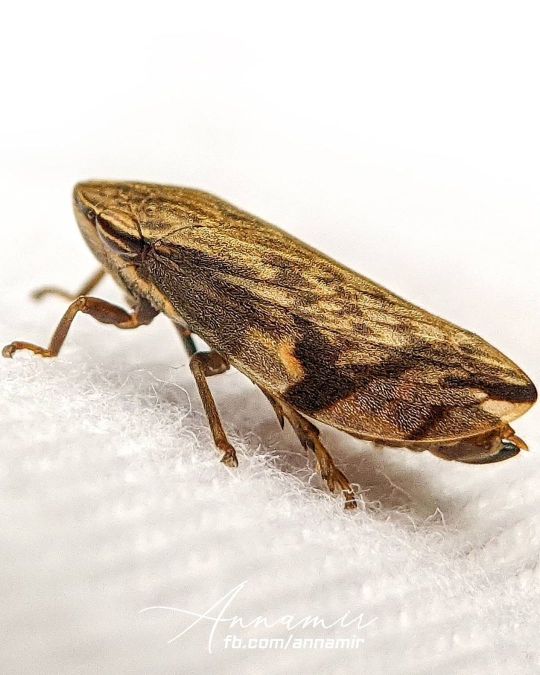
F.R.O.G.H.O.P.P.E.R ~ Philaenus spumarius, the meadow froghopper or meadow spittlebug, is a species of insect belonging to the spittlebug family Aphrophoridae. ~~~~~~~~~ Setakat jumpa, yang ni paling laju menghilang, sekali dia lompat, macam kilat, tak nampak arah dia melompat, tak padan dengan kecik mulus. Saiz yang ni haritu anggaran dalam 5mm aja gayanya. ~~~~~~~~~ Shot on Pixel 3 XL + Lensbong 25mm https://www.instagram.com/p/CSO-cdzhR5_/?utm_medium=tumblr
0 notes
Link
The lede: “A meadow froghopper urinates so much that it could drown itself. Luckily, the insect Philaenus spumarius, which is approximately the size of a Tic Tac, has a butt catapult that regularly flicks its globules of liquid waste into the air and safely away from its body.” I feel as though we would be more popular if we regularly shared science facts about meadow froghoppers at parties...
0 notes
Text
This Insect Drinks Your Milkshake
This Insect Drinks Your Milkshake
The froghopper has amazing powers of suction, scientists found. It also produces astonishing amounts of urine.
A meadow froghopper urinates so much that it could drown itself. Luckily, the insect Philaenus spumarius, which is approximately the size of a Tic Tac, has a butt catapult that regularly flicks its globules of liquid waste into the air and safely away from its body.
“At this tiny, tiny…

View On WordPress
0 notes
Photo




A few more generic beasties from Steigerwald, 6 June 2017.
TOP: Grasshopper nymph
TOP MIDDLE: Pacific Forktail Ischnura cervula (female)
BOTTOM MIDDLE: Meadow Froghopper Philaenus spumarius
BOTTOM: Longhorn flower beetle
#pacific northwest#insect#insects#arthropods#invertebrates#damselfly#dragonfly#odonata#odonate#spittlebug#fauna#wildlife#macro#photography
8 notes
·
View notes
Text
I think I may have broken the weather
Ruth wonders whether the change in the weather was caused by moving her Mediterranean shrubs to their summer home
Pinching out water shoots and suckers from our lemon tree
I’d like to take this opportunity to apologise profusely for the abrupt slump in the weather towards the end of last week. It’s all my fault you see, for moving our olive and lemon trees out of the greenhouse and into their summer residency on the patio.
I think they enjoyed their winter undercover but now they need fresh rain, sunshine and a breeze to continue to grow strongly.
Citrus trees need a high nitrogen feed between March and October
Both are young trees but growing well – touch wood. The lemon has a few small fruits and lots of deliciously scented flowers. I fed it with a summer citrus feed added to a can of rainwater, then pinched out a few wayward and tattered shoot (known as ‘water shoots’) and removed a handful of suckers sprouting around the base of the trunk.
Pinch out suckers and water shoots growing from the trunk of your citrus tree
Pinching out over-long top growth keeps the plant looking neat and removing unwanted trunk growths stops energy being syphoned away from the main plant.
The olive tree was also fed and watered, this time with a new organic all-round feed called BioPower, which is a by-product from a family-run farm in Cumbria.
BioPower is a new organic liquid feed from EcoGrow and can be used on all your plants
It’s a pungent brew but promises to deliver all the necessary ingredients for healthy, robust plants. You can find out more and buy it at ecogrow.co.uk
Olives are under threat across Europe from a deadly disease spread by sap-sucking spittle bugs. Xylella fastidiosa is a bacterium that results in the disease and death of many popular garden plants.
amateurgardening.com/blog
It is established in areas of Italy, France and Spain and has resulted in the death of millions of olive trees in southern Italy. It affects more than 500 different plant species including garden favourites such as lavender, oleander, rosemary and flowering cherry.
If you see cuckoo spit made by froghoppers (spittlebugs) please report it if you can
So far it hasn’t been found in the UK to date and we want to keep it that way, so the RHS is calling on people to report sightings of spittlebugs – also known as froghoppers – that are found in gardens, meadows, grasslands and woodlands from April to late June.
amateurgardening.com/blog
There are ten species of spittlebug in the UK and the young, called nymphs, produce whitish, frothy blobs of spittle (often called cuckoo spit) on leaves and branches.
If you find any in your garden, you can report it online only at surveymonkey.co.uk/r/spittle2020
Other shrubby jobs completed this week included tying our container-growing ‘Countess of Wessex’ clematis to a trellis.
Tying our compact ‘Countess of Wessex’ clematis to a trellis
This gorgeous compact climber with large white and pink blooms cost less than a fiver in the garden centre bargain bin last summer. This summer it is putting on an amazing show and with any luck will have a second flowering in late summer and early autumn, providing it is fed and watered well.
My final task was the re-potting (and hopefully saving) of a small, neglected bottlebrush tree that seemed to outgrow its pot and compost in the time it took me to make a cup of tea.
Teasing out the roots of our potbound bottlebrush
Once it was out of its container I teased out the roots as best I could. Sometimes it’s easier to do this in bowl of water as it washes away the old compost and makes it easier for you to get fingers and thumbs into the roots to untangle them.
amateurgardening.com/blog
This is also an excellent opportunity to check for other problems such as vine weevil grubs or small slugs feeding on and among the roots. If you find any, wash the roots in clean water and re-pot in new compost.
Slug eggs are easy to spot as they are large, white or creamy and translucent. Crush them or put them on the bird table. Vine weevil eggs are too small to see, though the grubs are plump and cream-coloured, around 1/2in (1cm) long with brown heads.
Giving the repotted bottlebrush a good soak
Treat any grubs you find the same as the snail eggs then water the replanted shrub with a nematode of chemical drench.
My bottlebrush is now replanted in a larger pot of John Innes No 3 compost and I’m watching its progress carefully, keeping fingers crossed that I didn’t leave it too late.
We are here for you
Although lockdown is easing, many people are still confined to their homes or concerned about going out because they are vulnerable to catching C19.
Here at AG we appreciate that and are doing our best to keep connected with our readers though the magazine, this website and also through social media.
Our gardening ‘agony uncle’ John Negus is also still working hard. Send him your problems and questions, with pictures if you can, and he will get back to you with an answer within 24 hours, as he has been doing for decades. Contact him using the AG email address at: [email protected]
amateurgardening.com/blog
We already have thriving Facebook page but are also on Twitter and Instagram. These sites are a brilliant way of chatting to people, sharing news, information, pictures and just saying hello – we will get back to you as soon as we can.
Best of all, as gardeners are generally lovely folk, more interested in plants, hedgehogs, tea and cake than political shenanigans and point-scoring, so the chat is friendly and welcoming.
You can find us at:
Facebook: Facebook.com/AmateurGardeningMagazine
Twitter: Twitter.com/TheAGTeam
Instagram: instagram.com/amgardening_mag
So please drop by, follow us, ‘like’ our posts and say hello – we will reply as soon as we can. Happy gardening!
via RSSMix.com Mix ID 8135640 https://ift.tt/2XCJATl
0 notes
Photo
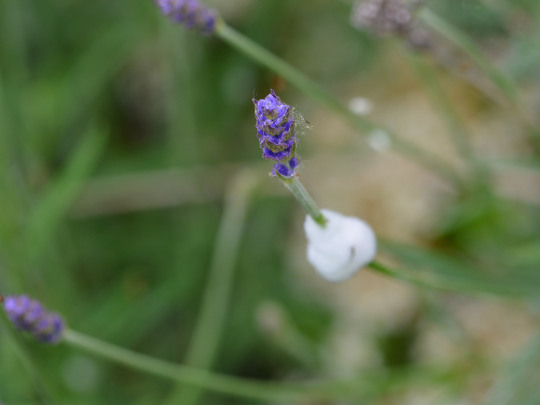

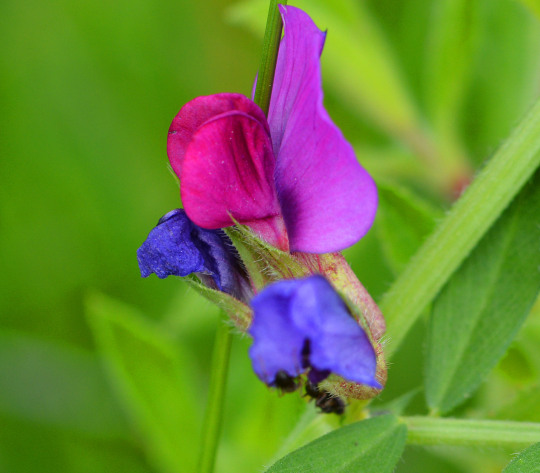
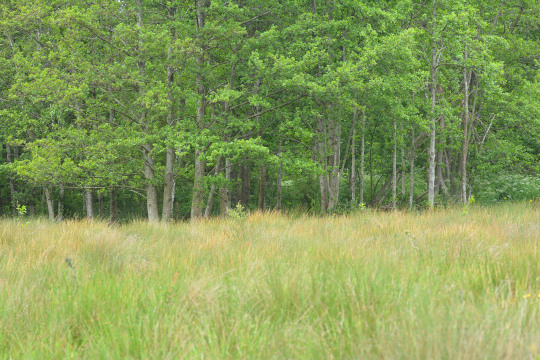
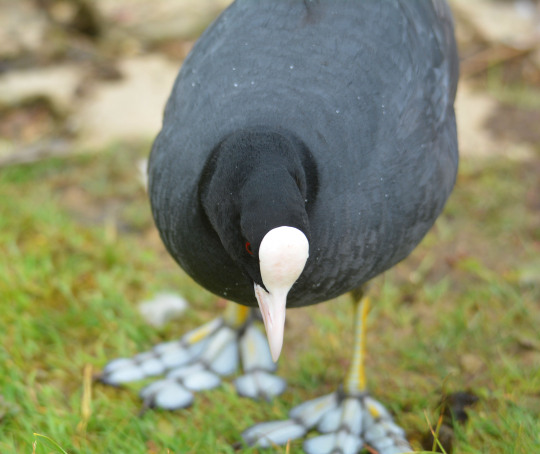
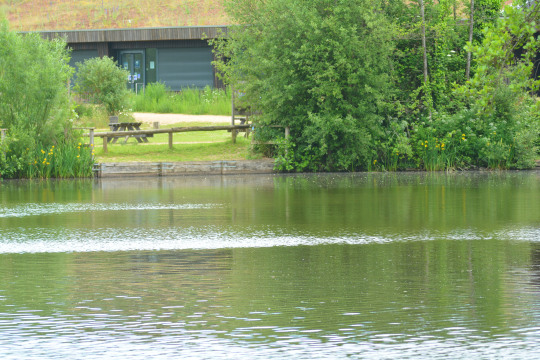

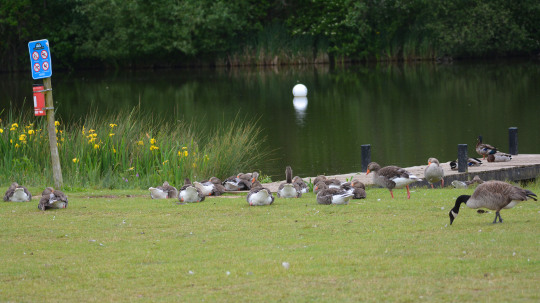
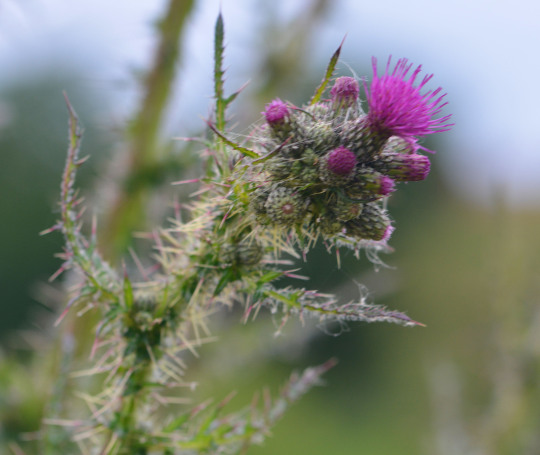
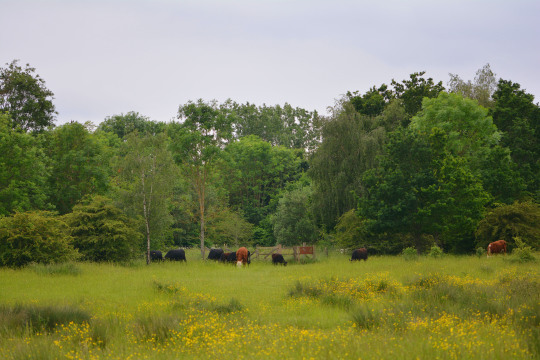
11/06/2021-Cuckoo spit, Coots, colour, calm and more at Lakeside and home
After enjoying garden birds again this morning as I worked and flowers on the balcony on the way out at lunch time again I had a very exciting day in the front garden. Firstly spotting some intriguing cuckoo spit standing out on the lavender type plant which did look fascinating. Something I think I’ve seen before possibly but never photographed, I managed the first picture I took today in this photoset of this admittedly the cuckoo spit itself not in focus instead the flower but I was so happy to see both I kept another photo with the cuckoo spit in focus which I tweeted alongside others tonight on Dans_Pictures. Cuckoo spit is a sap type substance produced by froghopper nymph. I then after noticing so much flowering in our humble and stoney patch of front garden like speedwell, dog roses, rose and daisy a couple more on the wild side this week I noticed another flower a pretty pink one which I took the second picture in this photoset of. I found via the Plant Net app it was a type of willowherb a key family out and about for me as I learnt flowers last year so this felt brilliant to add it to my list of great flowers at home this year.
I reached Lakeside and strolled down the path through the buttercup carpeted meadows. I took the third picture in this photoset of a vetchling type flower possibly Spanish vetchling that looked very beautiful and multi-coloured and fourth of a view over the richly vegetated northern fenced off area. Here I was excited to see a blue dragonfly darting very quickly around. It was either a male Broad-bodied Chaser of a target of mine this week as I saw it here in June and beyond well last year another of my favourites the Black-tailed Skimmer. I wasn’t quick enough to pick up enough details to clarify either way, but one thing of which I am certain is that its the first dragonfly I’ve seen on patch this year so it was exciting to see this flash of blue.
Reaching beach lake and I saw once more that the new star family of Lakeside for nesting birds for me has arrived, the Coots. I was thrilled to see an adult with three adorable chicks which I first noticed yesterday. I was stood at a safe distant but the rightly protective parent came to greet me and seemed keen to make its presence known flashing its beak a little bit I took the fifth picture in this photoset of this bird as it became a great intimate moment with this bird. But the birds were getting on as if I wasn’t there too and I was honoured to be able to take more pictures of these smart youngsters taking a nice range I thought of all three I tweeted these pictures earlier. I took the sixth and seventh pictures in this photoset of some views and as I went round Concorde lake shown in the sixth picture I saw the prominent and surreal scene of a massive Terrapin lounging on a stick partially submerged. It was striking to see. I had seen them here last summer and this April but not this big so I am not sure if its one that has grown. Its fascinating to see a creature like this. I liked taking in nice flowering beside the lake with possible dogwood that looks nice. It was nice to see and hear loads of Jackdaws again today I think they must be nesting in the tall treed island on Concorde lake as they seem concentrated here this was great to witness in a nice scene. Via a nice chat with the fellow walker I quite often see to talk to back down the central path I was off back home and I enjoyed seeing garden birds again in pockets of time whist working.
I did what I quite often do now, a second walk over to Lakeside on a Friday evening to see in the weekend and in case I could get a better look of the dragonfly I sauntered back along the central path, down to beach lake and deviating from an intention of cutting across the southern fenced off nature reserve area to north of the steam railway station and then exiting by going up east of the track for a couple of reasons went back. On this walk I didn’t see the dragonfly again but did enjoy seeing marsh spotted-orchid yet again in multiple places and I also saw and tweeted a photograph of one which I found seems to be a common spotted orchid so a year first in an amazing and unprecedented week of orchids for me with them all springing up gloriously in their pretty pink. I saw a pretty purple flower here as well in the form of my first spiky thistle of the year which stood tall and starting to flower and looked very nice. It was nice to see a great array of other flowers along the fringes of this path, the path in itself alongside the meadows flanking it can be quite a good area for wildlife and flowers. I took the eighth picture in this photoset of a view over beach lake with stars of the day again Greylag and Canada Geese and yellow iris prominent, ninth of the thistle and tenth of a view over the southern fecnced off area. On this moody with it quite overcast evening walk here I was allured, relaxed and transfixed by beautiful bird song with a long singing Song Thrush one of my favourite bird songs and a Blackbird piping in beautifully too really good for the soul. At home today in the garden and out the front I noticed strangely as I did at Lakeside this week and last what appears to be vaguely autumnal leaves but I am not sure. A brilliant Friday for me for the bits of being in nature again. I have a busy few days and weeks coming up more of which I shall talk about in due course. I hope you all have a great and safe weekend.
Wildlife Sightings Summary: Carrion Crow, Jackdaw, House Sparrows well at home and Lakeside, Goldfinch, Starlings with some nicely in a group by beach lake too, Feral Pigeon with a nice pair with one white and the white one I took and tweeted a photo of tonight ringed which was interesting after I had similar last week here, Woodpigeon, Collared Dove, a lovely House Martin and lovely Swift at home, Mallard, Coot, Moorhen well standing out nicely against the green aquatic vegetation, Canada Goose, Greylag Geese, Lesser Black-backed Gull well, Black-headed Gull, that dragonfly and the Waved Umber in the house for the fourth night in a row.
#jackdaw#dragonfly#waved umber#greylag goose#coot#moorhen#song thrush#blackbird#cuckoo spit#lavender#flowers#uk#england#wolrd#beautiful#happy#lakeside#lakeside country park#weekend#friday#europe#photography#birdwatching#lesser black-backed gull#willowherb#feral pigeon#collared dove#woodpigeon#house sparrow#common spotted orchid
1 note
·
View note
Text
Half of World’s Olive Oil Threatened by Deadly Bacteria in Spain
www.inhandnetworks.com
Spanish officials have confirmed the arrival of Xylella fastidiosa, a pathogen deadly to olive trees, on the country’s mainland. About half the world’s olive oil comes from Spain’s estimated 340 million olive trees, and experts fear the bacteria could devastate the harvest. Up to a million olive trees in Italy were killed by the infection last year, leading Italian officials to chainsaw trees to the ground in an effort to stop the sickness.
The pathogen was found among almond trees in the eastern region of Valencia, according to Elena Cebrian, head of the agriculture department there. Of a sample of 17 almond trees, 12 were infected with the bacteria. The trees did not appear sick, but their almond production had decreased. Olive trees in the immediate area have not tested positive for the bacteria so far, but all trees and plants within a 300-foot radius of the infected almond trees are being killed, per containment measures enforced by the European Union. Officials are also treating the area against insects that may carry the pathogen. The country also has banned plant imports from Spain’s Balearic Islands as another precaution. Last year, Xylella subtypes were found on cherry trees in Mallorca, which is on the largest of these islands. Currently there is no cure for the disease caused by the bacteria.
Olive trees infected by Xylella fastidiosa in the Puglia region of Italy. There is no cure for the disease caused by the bacteria. Tiziana Fabi/AFP/Getty Images
Keep up with this story and more by subscribing now
Xylella fastidiosa, which the Spanish newspaper El Mundo has called the “Ebola of olive trees,” is feared by olive growers. The European Union considers it, “one of the most dangerous plant bacteria worldwide,” with a huge potential to decimate crops and hurt agriculture. The pathogen was first reported in Europe in 2013, when it was found in the olive groves of Puglia, in Italy. France reported an outbreak in Corsica in 2015 and later on the mainland among myrtle-leaf milkwort.
A scathing report released in June by the European Commission blames Italian authorities for allowing the Italy outbreak to proceed unchecked. Researchers believe X. fastidiosa reached Italy from its native ecology in the Americas. A recent thorough overview in Nature documents the challenges that followed. After the bacteria were identified as the cause of the “olive quick decline syndrome” striking Puglia trees, local environmentalists were furious about ancient olive trees being cut down to stop its spread, leading one prosecutor to launch a criminal investigation asserting that the researchers had themselves caused the infection.
A dried olive branch from a tree infected by Xylella fastidiosa in Italy. Tiziana Fabi/AFP/Getty Images
The European Commission has expressed serious concerns about the havoc X. fastidiosa could wreak on the entire olive industry. Those fears are now accompanied by the threat of another subtype, X. fastidiosa fastidiosa, native to southern Central America. This species causes Pierce’s disease, known to kill grapevines in California and was recently spotted in Mallorca.
X. fastidiosa lives in the xylem tissue, which move water through a plant. Spittlebugs, cicadas and sharpshooters that feed on the xylem are known transmitters of the pathogen. One such insect, a spittlebug known as the meadow froghopper, or Philaenus spumarius, feeds frequently on olive trees and is the bug responsible for the Apulia outbreak. The pathogen can infect an estimated 300 plant types worldwide.
In trees infected by X. fastidiosa, the leaves dry out and soon appear scorched. The bacteria move throughout the xylem, preventing water and nutrients from reaching the leaves and other structures. The infection carries a high risk of death. In the U.S., X. fastidiosa has attacked blueberry, pecan, almond and other trees in the south and in California.
Tags: Industrial router, cellular router, 4g router, LTE router, 3g router, M2M router, wireless router, wireless m2m router, wireless m2m, Industrial Wireless M2M, Industrial Wireless M2M Router, Industrial Wireless M2M products, M2M wireless producdts, WiFi M2M Router, Industrial Wireless M2M gateway, industrial IoT router, industrial IoT gateway, industrial LTE router, Industrial router, cellular router, 4g router , LTE router,3g router , M2M router, wireless router, wireless m2m router, WiFi M2M Router, Industrial Wireless M2M Router, M2M IoT router, industrial wireless router, industrial M2M router, industrial LTE router, Industrial VPN router, Dual SIM M2M router, M2M gateway, IoT gateway, Industrial router, low-cost industrial router , low-cost cellular router, low-cost LTE router, low-cost M2M router, compact industrial router, low-cost cellular router , cellular router, low-cost 4g router , LTE router, 3g router , M2M router, wireless router, wireless m2m router, WiFi M2M Router, Industrial Wireless M2M Router, M2M IoT router, industrial wireless router,industrial M2M router, industrial LTE router, Industrial VPN router, Dual SIM M2M router, M2M gateway, IoT gateway, LTE Cat 1 router, Embedded LTE Cat 1 router, Industrial LTE Cat 1 router, Verizon Embedded modem,Verizon Embedded router, Overhead Line Monitoring, Distribution Power Line Monitoring, Grid Analytics System, overhead Line sensor, grid fault detection, distribution Line Monitoring, grid fault location, Smart Vending, touchscreen vending, cashless vending, cloud VMS, vending retrofit, smart vending solution, vending vms, cashless payment, vending route optimization, vending inventory management, vending retrofit, vending PC, vending computer, Android vending computer, vending computer, Android vending computer, Android industrial computer, branding, 品牌设计, 标志设计, 室内设计, 菜单制作, 包装设计, 商业摄影, 视频制作, 网站开发, logo,interior, menu, packaging, photography, video, interior design, graphic design, website
0 notes
Photo

Scientific Name: Philaenus spumarius
English Name: Common or Meadow Froghopper
Swedish Name: Allmän Spottstrit
A widespread species of Froghoppers, this one can be found throughout most of Europe, North Africa, and Asia. It has been introduced to North America. Appearance of individuals vary- as much as twenty different colours are known- and lighter or darker markings may differ. The female is larger than the male in size.
Both their scientific and Swedish names are derived from their foam nests. The Latin name may be translated into sparkle or foam lover, whilst the Swedish word Spott means spit, since the foam can look like saliva. In English, it is sometimes referred to as a Meadow Spittle Bug for the same reason.
Froghoppers are well-known for their amazing jumping or “hopping” abilities, as some can jump over 70 cm high.
#Philaenus spumarius#common froghopper#meadow froghopper#Allmän Spottstrit#meadow spittle bug#spittle bug#athropod#hemiptera#sweden#europe#north america#asia#north africa#insect#zoology
4 notes
·
View notes
Text
Keeping our plants safe and healthy
Ruth Hayes looks at the dangers posed by potential lapses in biosecurity and shows how you can help
Standard olive trees bought from supermarkets have become an excellent sourceof income
Horticulture industry chiefs are concerned that the Coronavirus emergency could bring about a reduction in the UK’s biosecurity.
They fear that if the C19 lockdown causes significant damage to the UK’s gardens industry, more plants will be shipped in from abroad where quarantine and disease screening may not be so rigorous.
It comes at a time when the business is already worried about the arrival of Xylella fastidiosa in the UK. This virulent disease, spread by sap-sucking bugs such as frog hoppers and spittle bugs, has wreaked havoc on olive plantations in parts of Italy and has also been found in France and Spain.
Xylella has cut a swathe through the olive groves in areas of the mediterranean. Picture Steven White/Alamy
It prevents water from being transported from the roots to leaves with plants often exhibiting symptoms that can be confused with other common problems such as drought or frost damage.
To block the disease from the UK, where there are fears it could severely damage our oak, elm and plane trees, imports of olive trees and lavender bushes has been halted and gardeners are being advised to make sure they only buy UK-grown plants.
amateurgardening.com/blog
The same applies to other plants considered ‘high risk’ including almond trees, oleanders and rosemary bushes.
Paul Rochford, MD of Joseph Rochford Gardens Ltd, said: “Many people in most reputable garden centres stopped importing olive trees some time ago.
“We have to bear in mind that a big industry has built up around the sale of half-standard olive trees in supermarkets. Many of those come from Sicily, which is near Italy where there is the problem of Xylella, but you can bet that their biosecurity is pretty tight.”
However, he worries about less scrupulous merchants who uproot massive, ancient trees from the countryside, ‘stuff them in pots’ and import them to sell on.
Paul Rochford, director of Joseph Rochford Gardens Ltd, says Xylella is ‘a real business finisher”
The issue of biosecurity has been raised with George Eustice MP, Secretary of State for Environment, Food and Rural Affairs. The Worshipful Company of Gardeners wrote to him warning that the loss of the UK’s gardening industry could open a Pandora’s Box of horror for the nation’s plants.
A letter to the MP says: “A major loss of UK production capacity will not lead to a reduction in demand; but this demand will most likely be supplied from Europe with plant health screening losing the rigor that it currently enjoys. This will be a major setback to the work done to date and may derail future efforts.”
amateurgardening.com/blog
Prince Charles has been leading conferences with DEFRA to find a way of improving biosecurity, but Paul Rochford admits it’s a massive problem to address.
While larger businesses have the scope and knowledge to self-quarantine, smaller ‘landscape gardeners working out of their back yards’ may not have the space nor experience.
He said: If something like Xylella escapes into an area it’s a real business-finisher. You thought Covid was bad, but wait for this – you may as well just get the bonfire started.”
Reporting froghopper sightings
AG readers are being asked to help prevent Xylella from entering the UK.
Thousands of volunteers are needed to help map the distribution of spittlebugs, one of the chief carriers of the problem, that are found in gardens, meadows, grasslands and woodlands from April to late June.
Cuckoo spit is the sign of spittle bugs. Notify the RHS if you see any
There are ten species of spittlebug in the UK and the young, called nymphs, produce whitish, frothy blobs of spittle (often called cuckoo spit) on leaves and branches.
Gerard Clover, Head of Plant Heath at the RHS, says: “Xylella remains our number one concern but is not an issue bound by the garden fence. Understanding how and where the disease’s primary vectors move is fundamental to understanding how we can stop the devastation of our gardens and environment should it arrive.”
If you spot cuckoo spit in your garden you should report it online via surveymonkey.co.uk/r/spittle2020
We are here for you
Although many people are coping well with self-isolation, others are really struggling and feeling completely forgotten and alone.
Here at AG we are doing our best to keep connected to our readers though the magazine, this website and also through social media.
Our gardening ‘agony uncle’ John Negus is also still working hard. Send him your problems and questions, with pictures if you can, and he will get back to you with an answer withing 24 hours, as he has been doing for decades. Contact him using the AG email address at: [email protected]
amateurgardening.com/blog
We already have thriving Facebook page but are also on Twitter and Instagram. These sites are a brilliant way of chatting to people, sharing news, information, pictures and just saying hello – we will get back to you as soon as we can.
Best of all, as gardeners are generally lovely folk, more interested in plants, hedgehogs, tea and cake than political shenanigans and point-scoring, so the chat is friendly and welcoming.
So please drop by, follow us, ‘like’ our posts and say hello – the Instagram feed is in it’s really early days so the quicker we can get that going with your help and support, the better!
You can find us at:
Facebook: Facebook.com/AmateurGardeningMagazine
Twitter: Twitter.com/TheAGTeam
Instagram: instagram.com/amgardening_mag
via RSSMix.com Mix ID 8135640 https://ift.tt/2KsGIRB
0 notes